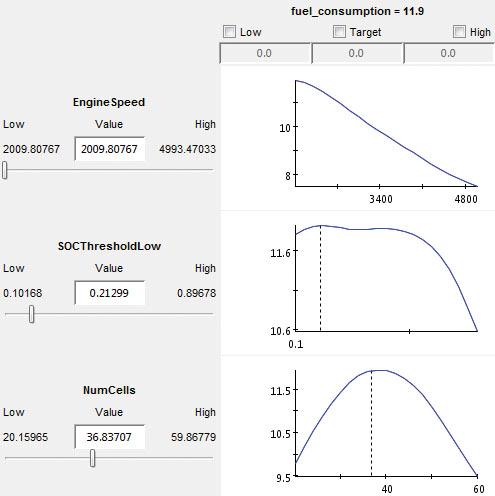
Latest News
January 1, 2016
 When engineers hear the term “optimization,” the first thing that comes to mind is usually structural (geometry) optimization—most likely the type called topology optimization. But for any product with a sophisticated functional architecture, optimization technology offers great benefit when used early in product development to optimize the functional systems models that are created and refined before geometry definition begins.
When engineers hear the term “optimization,” the first thing that comes to mind is usually structural (geometry) optimization—most likely the type called topology optimization. But for any product with a sophisticated functional architecture, optimization technology offers great benefit when used early in product development to optimize the functional systems models that are created and refined before geometry definition begins.
The mistaken assumption that “optimization” must mean geometry optimization is grounded in a misconception that shows up in many discussions of how to simulate early in product development, which tend to fixate on finite element analysis (FEA). The weakness of this view is that it overlooks the power of systems modeling for studying, exploring and optimizing designs at the beginning of projects—when product geometry is not yet available for 3D CAE (such as FEA or computational fluid dynamics) and engineering decision-making can have its greatest impact and leverage on project success.
Before Geometry: Systems Modeling Software
Systems modeling software consists of tools and languages for systems engineering: the specification, analysis, design, verification and validation of systems and systems-of-systems. In discrete manufacturing, systems engineering is the coordinated specification through validation of complex physical systems across multiple domains—mechanical, electrical, electronic, hydraulic, thermal, control, electric power and others.
Systems modeling software is used early in engineering projects to make a product’s most crucial functional and architectural decisions. For complex architecture products, design exploration and optimization software can have its greatest impact by being used to optimize the functional systems models created during conceptual and preliminary engineering with tools such as Dassault Systèmes’ Dymola, Maplesoft’s MapleSim, MathWorks’ Simulink, PTC’s Integrity Modeler, Siemens PLM Software’s LMS Imagine.Lab Amesim, or the Modelica tools and libraries from Modelon and others.
Design Exploration and Optimization of a Hybrid Electric Vehicle’s Powertrain
While design exploration and optimization promises great benefit for aircraft, space systems, defense systems and any other industry whose products have complex multi-domain architectures, some of its first adopters have been automotive manufacturers pressed to meet the engineering challenges of powertrain electrification. One example is an automotive original equipment manufacturer where design exploration and optimization software was used with systems modeling and simulation software to optimize performance of the combined electric-and-combustion propulsion system in a new hybrid electric vehicle (HEV).
 Fuel-economy response surface model (RSM) and RSM slice charts show the input variable values that satisfy the fuel-economy objective (high target value). Images courtesy of Maplesoft and Noesis Solutions.
Fuel-economy response surface model (RSM) and RSM slice charts show the input variable values that satisfy the fuel-economy objective (high target value). Images courtesy of Maplesoft and Noesis Solutions.A key challenge in HEV powertrain development is to maximize fuel economy while complying with mandated emissions targets—two competing or conflicting performance objectives. In particular, the “traveling performance,” or difference between the actual and legally mandated emissions levels, needs to be minimized to some extent to ensure robust compliance with those mandates. This is an ideal task for design exploration and optimization software, which was used to automate the traditional “guess-and-correct” approach to simulation-based design, helping engineers evaluate and balance the tradeoffs between maximizing fuel economy and maintaining emissions compliance.
 Traveling-performance response surface model (RSM) and RSM slice charts show the input variable values that satisfy the traveling-performance objective (low target value). Images courtesy of Maplesoft and Noesis Solutions.
Traveling-performance response surface model (RSM) and RSM slice charts show the input variable values that satisfy the traveling-performance objective (low target value). Images courtesy of Maplesoft and Noesis Solutions.In this project, Noesis Solutions’ Optimus design optimization and process integration software was used in conjunction with Maplesoft’s MapleSim multi-domain systems modeling and simulation software. First, engineers used the optimization software’s design of experiments (DOE) and response surface modeling (RSM) capabilities to identify the best possible tradeoff between the fuel-economy and traveling-performance objectives by varying and balancing three key variables in the powertrain systems model:
1. Number of battery cells (20 to 60)
2. Engine speed (2000 rpm to 5000 rpm)
3. Battery charge level that initiates battery recharging by the combustion engine (10% to 90%)
Then the optimization software’s multi-objective (Pareto) optimization capability was used to identify two separate design optima: the fuel-economy optimum (11.8 km per liter/33.3 miles per gallon—39% better than the initial baseline design) and the traveling-performance optimum, a unified measure of pollutant concentration resulting from a formula whose inputs are the concentration levels of several different compounds in combustion engine exhaust (2,477—22% better than the initial baseline design). Because these optima were at opposite endpoints of the “Pareto front” of possible tradeoff solutions, a compromise “Pareto-optimum” design needed to be found in between.
With both objectives equally weighted, the resulting single-tradeoff HEV system configuration yielded fuel economy of 11.3 kilometers per liter (31.9 miles per gallon) and traveling-performance value of 2,970. With these values, engineers improved fuel economy an impressive 21% and traveling performance (emissions compliance) by 15% over the initial design.
Subscribe to our FREE magazine, FREE email newsletters or both!
Latest News
About the Author
Bruce Jenkins is president of Ora Research (oraresearch.com), a research and advisory services firm focused on technology business strategy for 21st-century engineering practice.
Follow DE








